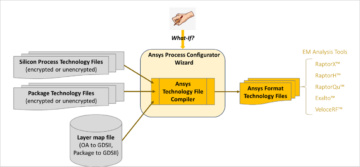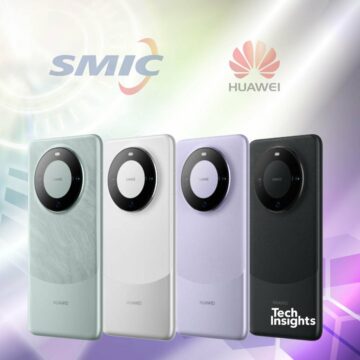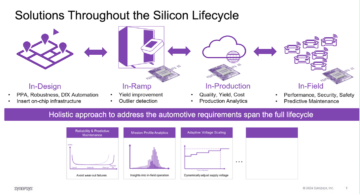While writing on infotainment and ADAS I sometimes wonder about the devices that make an EV run. These have nothing to do with digital or software wizardry. While logic and software play a role, the real heart of EV power is in power electronics driving motors, regenerative braking and charger options at home and on the road. Technologies in support of power electronics are predominantly bipolar (e.g. IGBT) and silicon carbide (SiC). SiC is growing fast, driven particularly by Tesla (barring some recent hiccups). Which is good news for Soitec who build the SiC substrates/wafers on which many semis and Tier1s can manufacture their SiC power devices. Soitec just announced a new fab to create these substrates.
![]()
A very elementary primer on power electronics in EVs
Start with the drive train. Previously. if I thought about it at all I vaguely assumed DC batteries driving DC electric motors. Completely wrong it turns out. The motors are AC for a variety of reasons, not least because controlling speed for a DC motor through a variable resistor would waste significant energy and reduce range. Driving AC motors from a DC supply requires an inverter, the first place where you will find SiC transistors.
The standard method to control speed in these systems is through pulse width modulation (PWM), a more energy efficient approach I would assume. SiC adds further to this advantage in several respects. It can tolerate higher voltages than silicon-based devices and can operate at higher frequencies, resulting in more compact designs. These devices also generate less heat. All of which means that a typical implementation will be lighter weight and more energy efficient, reducing cost and increasing the range of the car.
These benefits apply equally and then some to charging stations, particularly for fast charging. Rapid chargers can deliver 500-600kW of DC power from an AC supply, needing a full-wave rectifier capable of outputting that level of power. Again an SiC implementation will be smaller, more energy efficient, and lower cost than a silicon-based implementation, all significant considerations when it comes to scaling charging stations nationally.
Given social and political pressures to move to EVs, there is very active growth in this sector. One survey shows 28% CAGR through 2030, with major semiconductor suppliers including Rohm, Infineon, ST, OnSemi, and Wolfspeed.
Soitec and their SmartSiC technology
Remember that Soitec builds SiC substrates on which their customers manufacture SiC-based circuits like inverters and rectifiers. This technology depends on a technique called SmartCut®, invented at nearby CEA-Leti in Grenoble (France). SmartCut is a method to transfer a thin crystalline layer onto the top of another material, rather like an atomic scalpel slicing a layer off an SiC ingot, which is then placed on top of a poly-SiC wafer, yielding what Soitec call Auto SmartSiC®. The SmartCut method has become an industry standard apparently. Soitec claims significant SiC manufacturing cost and energy advantages in this approach over other methods, important in what is likely to be a hot and competitive market.
The plant they have commissioned is in Bernin, just a little south of the ST Crolles fab, also close to Grenoble and CEA-Leti. They expect the plant to have a final production capacity of 500k SiC wafers per year. You can learn more about Auto SmartSiC HERE.
Share this post via:
- SEO Powered Content & PR Distribution. Get Amplified Today.
- PlatoData.Network Vertical Generative Ai. Empower Yourself. Access Here.
- PlatoAiStream. Web3 Intelligence. Knowledge Amplified. Access Here.
- PlatoESG. Carbon, CleanTech, Energy, Environment, Solar, Waste Management. Access Here.
- PlatoHealth. Biotech and Clinical Trials Intelligence. Access Here.
- Source: https://semiwiki.com/automotive/337008-powering-emobility-through-silicon-carbide-substrates/
- :has
- :is
- :not
- :where
- 200
- 2023
- 2030
- a
- About
- about IT
- AC
- active
- ADAs
- Adds
- ADvantage
- advantages
- again
- All
- also
- an
- and
- announced
- Another
- Apply
- approach
- ARE
- assume
- assumed
- At
- auto
- batteries
- BE
- because
- become
- benefits
- build
- builds
- by
- CAGR
- call
- called
- CAN
- capable
- Capacity
- car
- charging
- charging stations
- claims
- Close
- comes
- compact
- competitive
- completely
- considerations
- control
- controlling
- Cost
- create
- Customers
- dc
- deliver
- depends
- designs
- Devices
- digital
- do
- drive
- driven
- driving
- e
- efficient
- Electric
- Electronics
- energy
- equally
- EV
- evs
- expect
- FAST
- final
- Find
- First
- For
- France
- from
- further
- generate
- good
- Growing
- Growth
- Have
- Heart
- higher
- Home
- HOT
- HTTPS
- i
- if
- implementation
- important
- in
- Including
- increasing
- industry
- Infineon
- Invented
- IT
- jpg
- just
- layer
- LEARN
- least
- less
- Level
- lighter
- like
- likely
- little
- logic
- lower
- major
- make
- many
- Market
- material
- max-width
- means
- method
- methods
- more
- Motor
- Motors
- move
- nationally
- needing
- New
- news
- nothing
- of
- off
- on
- ONE
- onto
- operate
- Options
- or
- Other
- out
- over
- particularly
- per
- Place
- placed
- plant
- plato
- Plato Data Intelligence
- PlatoData
- Play
- political
- Post
- power
- Powering
- predominantly
- pressures
- previously
- primer
- Production
- pulse
- range
- rapid
- rather
- real
- reasons
- recent
- reduce
- reducing
- regenerative
- requires
- respects
- resulting
- road
- Role
- Run
- scaling
- sector
- semiconductor
- several
- Shows
- significant
- Silicon
- silicon carbide
- smaller
- Social
- Software
- some
- sometimes
- South
- speed
- st
- standard
- Stations
- suppliers
- supply
- support
- Survey
- Systems
- technique
- Technologies
- Technology
- Tesla
- than
- that
- The
- their
- then
- There.
- These
- they
- this
- thought
- Through
- to
- top
- Train
- transfer
- turns
- typical
- variable
- variety
- very
- via
- Waste
- weight
- What
- What is
- when
- which
- while
- WHO
- will
- with
- wolfspeed
- wonder
- would
- writing
- Wrong
- year
- yielding
- you
- zephyrnet










